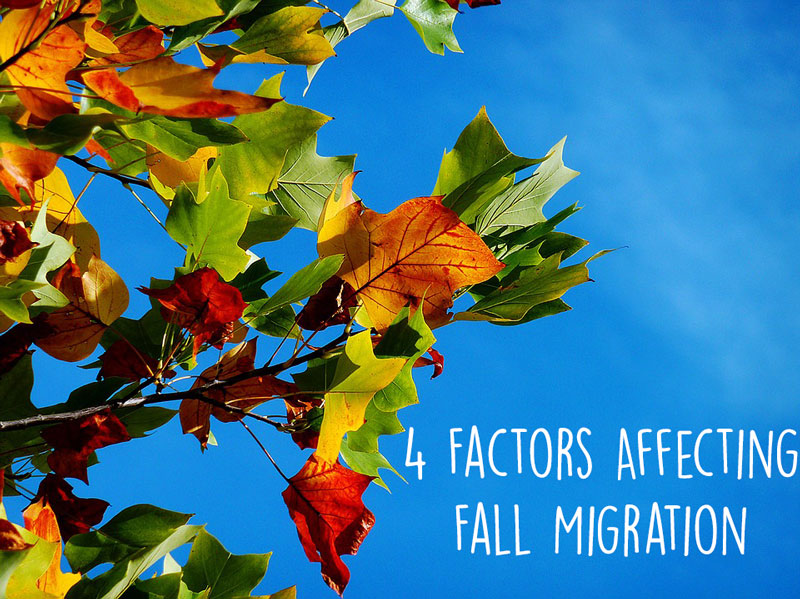Offer
Provide additional details about the offer you're running.
Provide additional details about the offer you're running.
Provide additional details about the offer you're running.

We’ve already said our goodbyes to many of our summer species and are left with a few of our late migrants and the odd straggler. Over the past few weeks, our climate and environment here in Eastern Ontario has shifted dramatically from the hazy days of late summer into the cool evenings and brisk days of the early fall season.
While it has certainly been pleasant thus far, our migratory backyard birds are definitely on the move and are busy fueling up for their journey south. Keeping your feeders filled and ensuring that our birds have reliable water sources are key during this pivotal season as they require more energy and resources than any other time of the year.
With this in mind, we wanted to touch on a number of unique factors that our birds use to determine that it is time to get that much needed preparation underway in order to be successful during this season.
Below, we break down four main factors that influence our birds and their southbound migration during the fall season.
As most of us have noticed, our daylight hours are shrinking by the day. This is a surefire signal to our backyard birds that the fall season is upon us and that it is time to prepare for migration. In addition to the hourly allowance of sunlight per day, birds also use the angle of the sun to determine the season and their timely departure.
Nothing is more jarring to small migratory songbirds than the sudden drop in temperatures, particularly in the evening hours. As both daytime and nighttime temperatures begin to drop, birds go through physical changes to prepare for migration and it also signals them to locate reliable food sources for the additional energy required to keep them warm.
While most of our migratory birds are well past the nesting season, they will pay close attention to any young or fledglings. The maturity of their young is a deciding factor as most species will not begin migration until their young are mature enough to take care of themselves.
Perhaps one of the most obvious reasons is food availability. As summer crops begin to become scarce and the food sources they relied on during the spring and summer are near gone, birds will naturally move to southern locales in search of food. This is true to regional migrants such as our winter finch species, Bluejays and many others who will move into our area from more northern regions in search of better food sources.
High Quality Blend